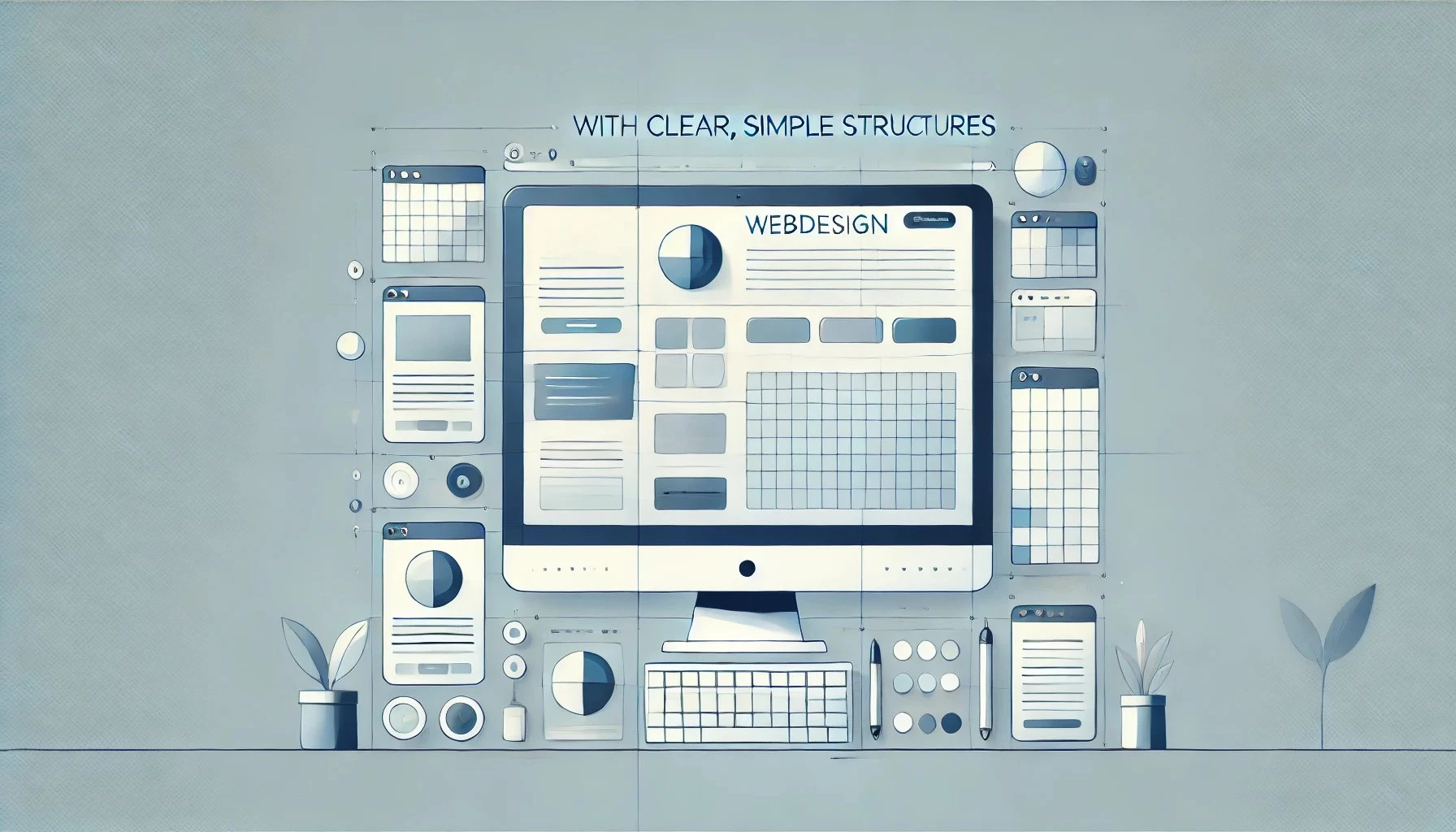Accessible web design: Reaching all people

- What is accessible web design?
- Why should websites be accessible?
- Advantages of an accessible website for companies
- How to make your website accessible: practical tips for navigation, design and content
- The most important guidelines for accessible web design
- The cookie banner: A central component of accessible web design
- Conclusion
What is accessible web design?
Accessible web design means that websites are designed in such a way that they can be used by all people without restriction - regardless of their individual limitations. This includes people with visual, hearing, motor or cognitive impairments.
The goal is to provide equal access to digital information and services for all people, and accessibility not only means legal compliance, but also leads to better user experiences for everyone - regardless of whether someone has a disability or not.
Why should websites be accessible?
The following aspects illustrate why accessibility in web design is important and what the benefits are:
- Support inclusion and digital participation: Accessibility makes it possible to provide access to information and services for everyone.
- Complies with legal requirements: Websites must comply with requirements such as the BITV or the Barrierefreiheitsstärkungsgesetz (BFSG).
- Improves reach and user experience: An accessible design increases reach and improves the user experience for all visitors.
- Ensures better usability: Websites without barriers are easy to use and understand for all target groups.
Advantages of an accessible website for companies
Even companies that are not legally obliged to be accessible can benefit from an accessible website. This has the following advantages:
- Larger target group: an accessible website reaches more people as all content is accessible. This is a competitive advantage, particularly in view of demographic change and an ageing customer base.
- Better user experience: Accessible elements such as clear structures and alternative operating options improve user-friendliness and ensure greater satisfaction.
- Positive impact on SEO: Accessible websites are generally better structured and therefore more accessible for search engines, which increases visibility.
- Future-proofing: Companies that already focus on accessibility now are better prepared for possible legal extensions of the BFSG or other regulations.
How to make your website accessible: practical tips for navigation, design and content
How do you achieve accessible navigation?
Clear and accessible navigation is essential for the accessibility of your website. It ensures that all users can navigate effortlessly through your content.
- Use self-explanatory headings: Headings should clearly structure content and be immediately understandable.
- Make focus markers visible: Users who navigate using the keyboard benefit from easily recognizable visual cues.
- Avoid unnecessary steps: Intuitive navigation saves time and makes operation easier.
Advantage: Barrier-free navigation not only makes your website accessible, but also more user-friendly.
Use colors and contrasts correctly
Colors and contrasts are crucial for making content visible for all user groups, especially for people with visual impairments. With the right settings, readability is significantly improved.
- Ensure high contrasts: Text should stand out clearly against the background.
- Avoid color coding: Use additional symbols or text to convey information such as error messages.
- Use tools such as the contrast checker: These help to check and adjust your color choices.
Well-coordinated colors and contrasts increase readability and benefit all users.
Making forms accessible
Forms are a challenge for many people. With a well thought-out design, you can break down these barriers and significantly improve usability.
- Clear labeling: Label form fields clearly and comprehensibly.
- ARIA labels for screen readers: These ensure optimal usability.
- Clearly understandable error messages: Ensure that error messages stand out and are easy to understand.
With well-designed forms, you avoid frustration and create a positive user experience.
Make content easier to understand
Complex texts are a barrier for many people. Clear and simple language makes it easier to understand and increases the reach of your content.
- Avoid technical terms: Rely on simple, clear formulations.
- Bullet points for structure: Use lists to present content clearly.
- Short paragraphs: Summarize important information in short and concise paragraphs.
Comprehensible content makes your website more accessible and attractive for all target groups.
The most important guidelines for accessible web design
Accessibility in web design is defined by international and European standards. These guidelines help to design websites in such a way that they are accessible to all people.
The most important standards for accessible web design
- Web Content Accessibility Guidelines (WCAG): These internationally recognized guidelines set out detailed criteria for accessible websites. They often serve as the basis for legal requirements and were developed by the World Wide Web Consortium (W3C).
- European Standard EN 301 549: This standard defines the accessibility requirements for information and communication technology, including websites, in the EU.
The cookie banner: A central component of accessible web design
Accessible web design also includes an accessible cookie banner.
Accessible web design does not stop at the design of content or navigation - the cookie banner must also be accessible in order to provide all users with easy and equal access to your website.
With CCM19, you choose a solution that impresses with its screen reader compatibility, keyboard navigation and high-contrast design. This means you not only comply with legal requirements such as the Accessibility Improvement Act (BFSG) and the GDPR, but also increase the user-friendliness of your website.
Find out more about the accessible cookie banner from CCM19
Conclusion
Accessible web design is not only a legal necessity, but also an opportunity to improve digital participation for everyone and increase the reach of your website. Companies that embrace accessibility early on will benefit from a larger audience, a better user experience and a positive impact on SEO.
By breaking down barriers and providing clear, understandable content as well as user-friendly navigation and forms, you make your website accessible and future-proof for everyone.
